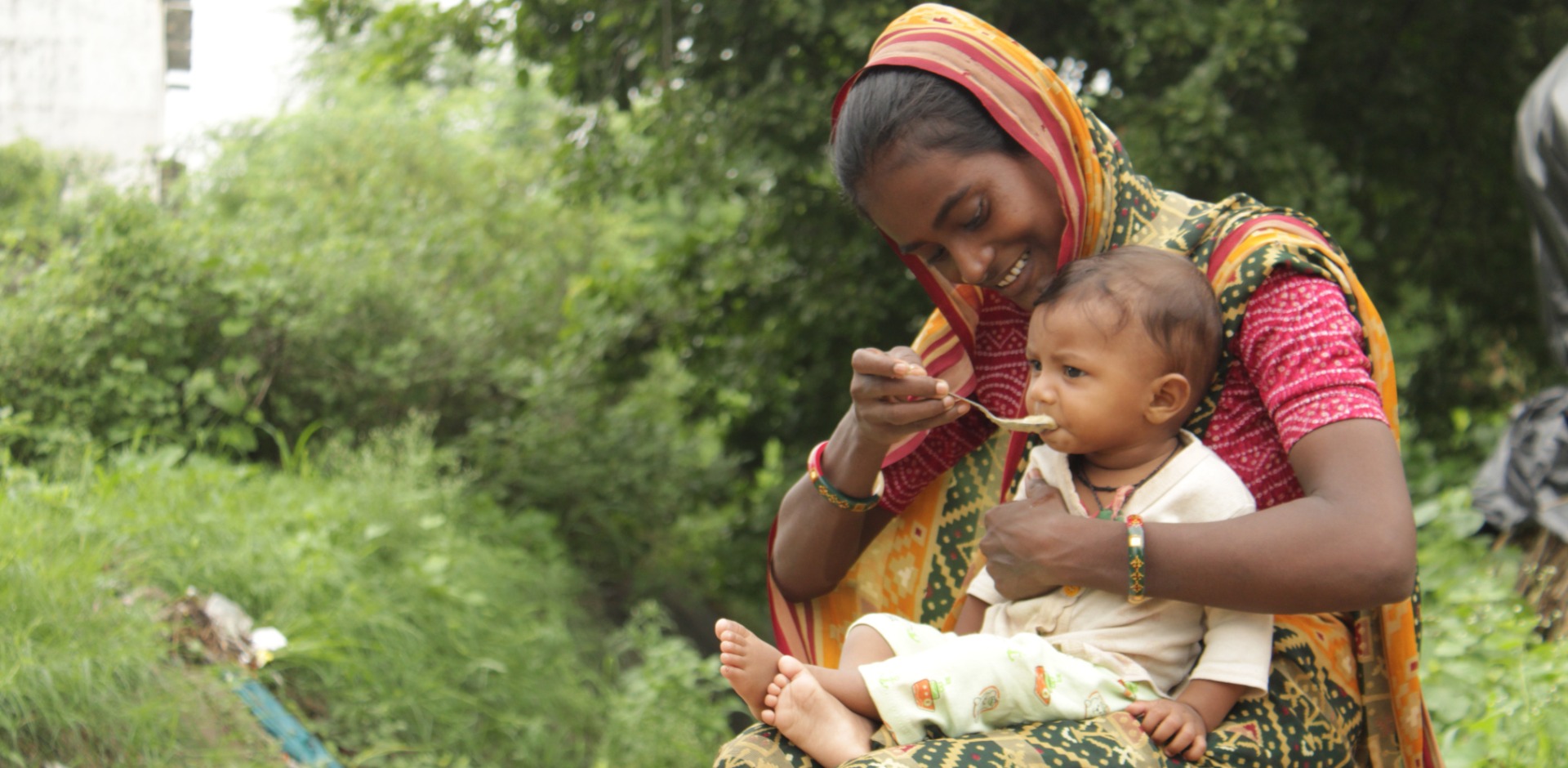
This Holiday Season, Give the Gift of Hope
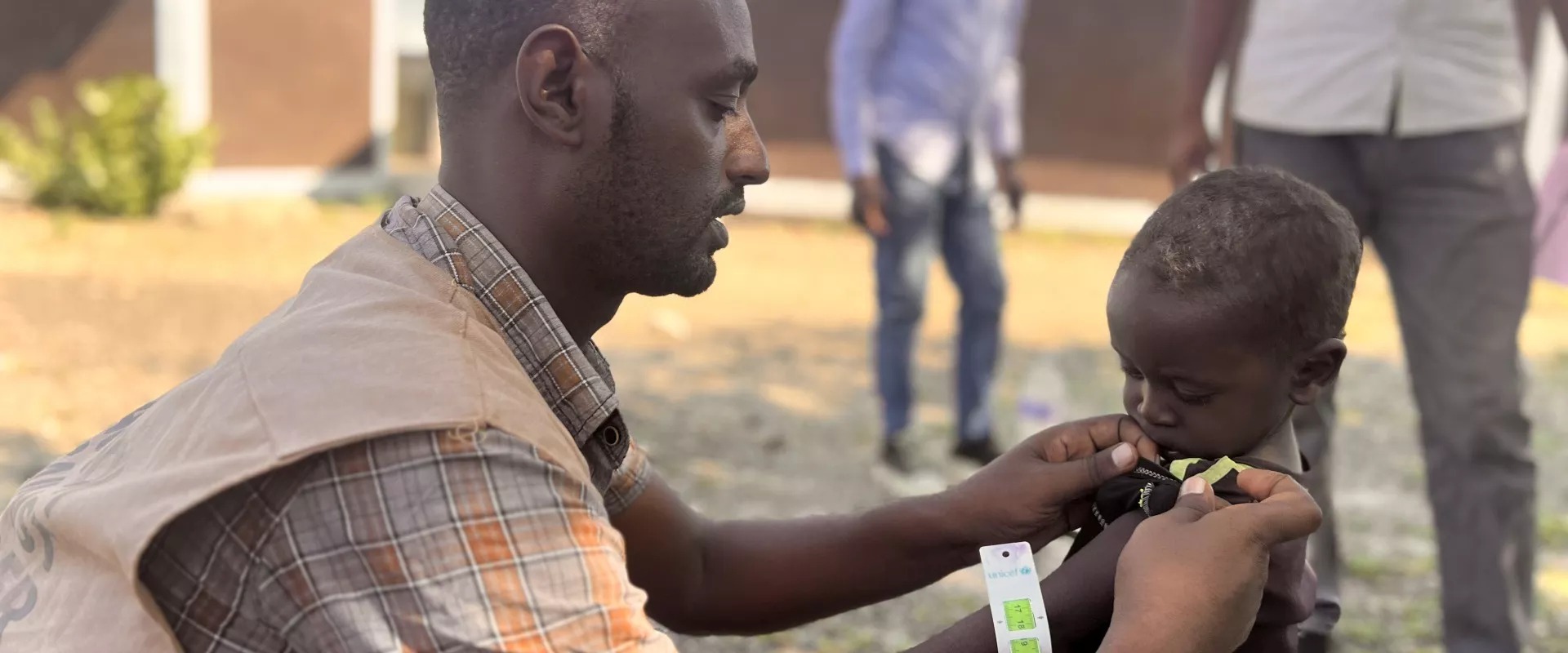
Ethiopia continues to face a major humanitarian crisis caused by climate shocks, disease outbreaks, conflict, and economic challenges. The last couple years have seen particular vulnerability with compounding crises deepening food insecurity and increasing malnutrition.
Two-year-old Waqoo Gurri, who lives in Wayu Wando – a small village nestled between a range of large rolling hills and a meandering river in southern Ethiopia – was diagnosed with acute malnutrition, also known as wasting, during a mass screening at his local health post last December.
Many children like Waqoo, who are diagnosed with this type of malnutrition, are admitted to an outpatient treatment program, which is part of the “community-based management of acute malnutrition (CMAM)” model. In this program, his mother brings him to a nearby health post where he is provided medicine and specially formulated nutritious foods on a weekly basis until he recovers.
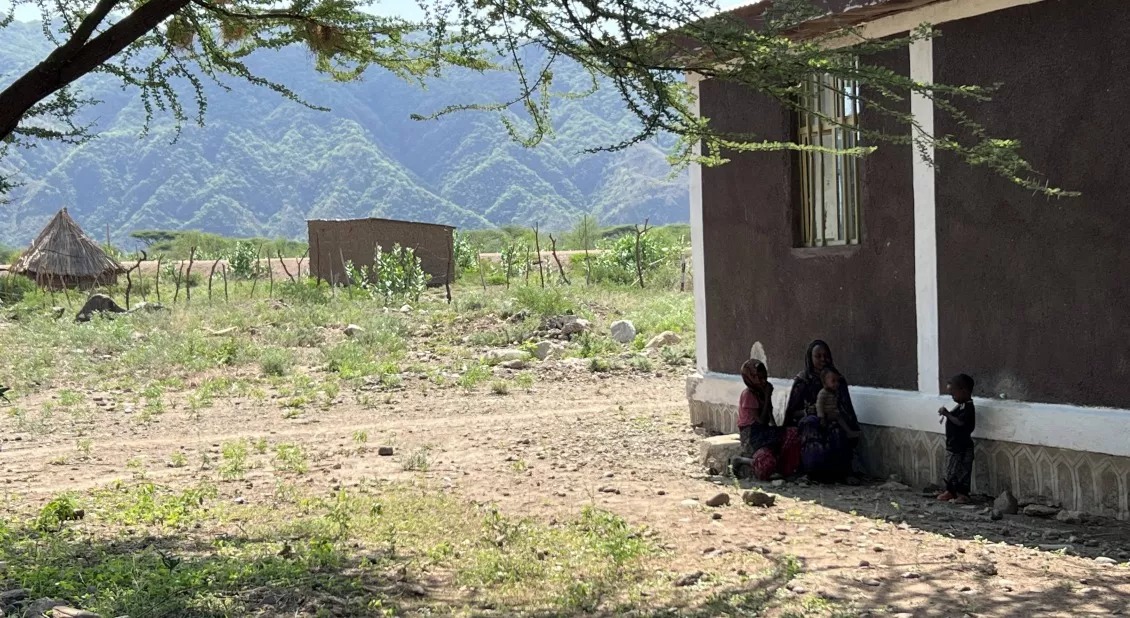
While the CMAM model has shown success in treating children with acute malnutrition over the past couple decades, it remains an inaccessible solution for many. Relatively complex implementation protocols, resource constraints, and supply chain breakages prevent such services from reaching all the children who need it — ultimately leaving millions without access to life-saving treatment each year.
Action Against Hunger is leading a research study – the Modified Dosage for Acute Malnutrition (MODAM) study – to test innovative modifications to this model that show potential for improving treatment coverage, reducing costs, and saving more lives.
As the research coordinator, I am responsible for overseeing the overall implementation of the MODAM study in Ethiopia, and I meet many children like Waqoo. Waqoo is not enrolled in our study, as we keep the identification of study participants confidential, but we do have Waqoo and his mother’s permission to share his story so that others will better understand the challenges and successes of battling malnutrition in Ethiopia. And since Waqoo is being treated alongside study participants, it also offers a window into how this research practically operates on a day-to-day basis.
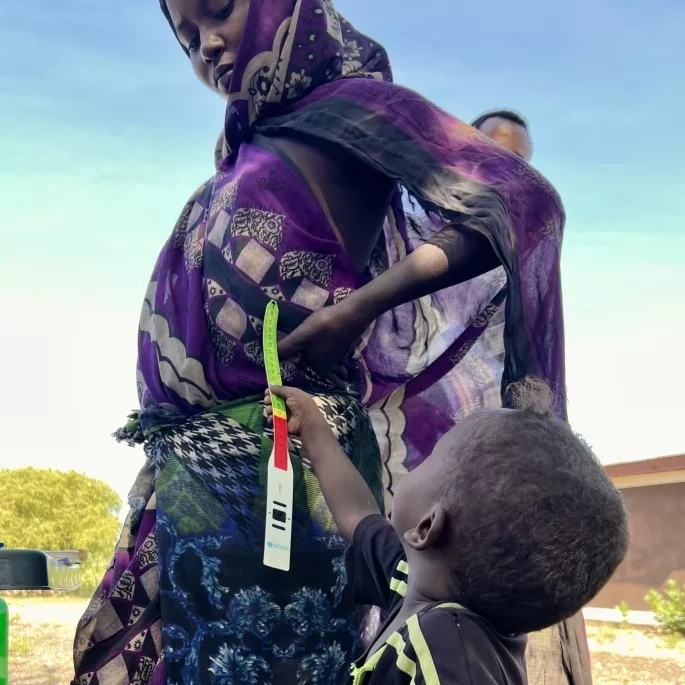
Action Against Hunger has been working in Ethiopia since 1985. Our dedicated teams treat malnutrition, increase access to clean water and safe sanitation, support farmers impacted by climate change, and spread awareness about critical nutrition and health practices.
Follow his journey with me to learn more about malnutrition in Ethiopia and Action Against Hunger’s research, which aims to save more lives, like Waqoo’s, every day.
My day starts early with a windy and bumpy drive. We’re headed 40 miles out from the rural town of Teltele, where the Action Against Hunger sub-office is based, to reach a remote health post named Wayu Wando. The small truck is loaded with several cartons of specially formulated nutritious foods, a wooden board used to measure height, an electronic scale, a metal box full of patient records, various medicines, and other supplies. All these supplies are packed in next to a team of four to six trained researchers who live in the area.
After arriving at Wayu Wando, the team disembarks and begins to set up for a day of routine clinical operations and data collection. A warm wind blows through the site, which is a welcome sign that the rains will soon arrive. After years of devastating drought, the area is just starting to recover.
Wayu Wando health post, like most health posts in Ethiopia, is a small one room building with a small desk and plastic lawn chair, where health extension workers provide basic healthcare services to local populations. These include things like vaccinations, first aid for minor injuries, family medicine, and treatment of diseases like malaria or tuberculosis.
I step back and watch – the team is a well-oiled machine following strict research protocols that they systematically employ day-to-day, across health posts.

As part of the MODAM study, we are testing if modified dosages of the specialized foods used to treat acute malnutrition can be used as effectively as the current weight-based dosing approach. Under the current approach, children receive more food as they gain more weight. However, malnourished children typically have the greatest need for calories at the beginning of treatment when their condition is more severe.
A modified dosage approach, like what is being tested in this study, moves away from the standard weight-based dosing to a simpler and often reduced dosing regimen. This approach consists of providing relatively larger amounts of food at the beginning of treatment – or during the most severe phases of acute malnutrition – and smaller amounts towards the end of treatment, during the less severe phases. This can improve efficiency in the use of resources and as a result, it would be possible to reach more children with treatment using the same resources available.
Under the broader MODAM study, we are running three separate randomized controlled trials (RCTs), making this a very comprehensive study. An RCT is a type of study that randomly assigns participants to either an intervention or control group, like in most drug trials or clinical trials. In this case, participants are randomly assigned to either receive the standard weight-based dosage or a modified dosage of the specialized nutritious foods. This allows us to test the effectiveness of the modified dosages compared to the standard dosages, with as little outside bias as possible. For this reason, RCTs are often considered the “gold standard” for determining the effectiveness of new treatments.
Waqoo and his mother, Laquu, are amongst the first to arrive at the health post. In one hand, he’s clutching his mother’s arm, in the other an appointment card printed on pink cardstock. Although most caregivers in Wayu Wando are illiterate, the brightly colored paper serves as a reminder for them to revisit the health post on the day of each week when nutrition services are available. The ID on the appointment card matches the medical record on file and the research team pulls out his chart.
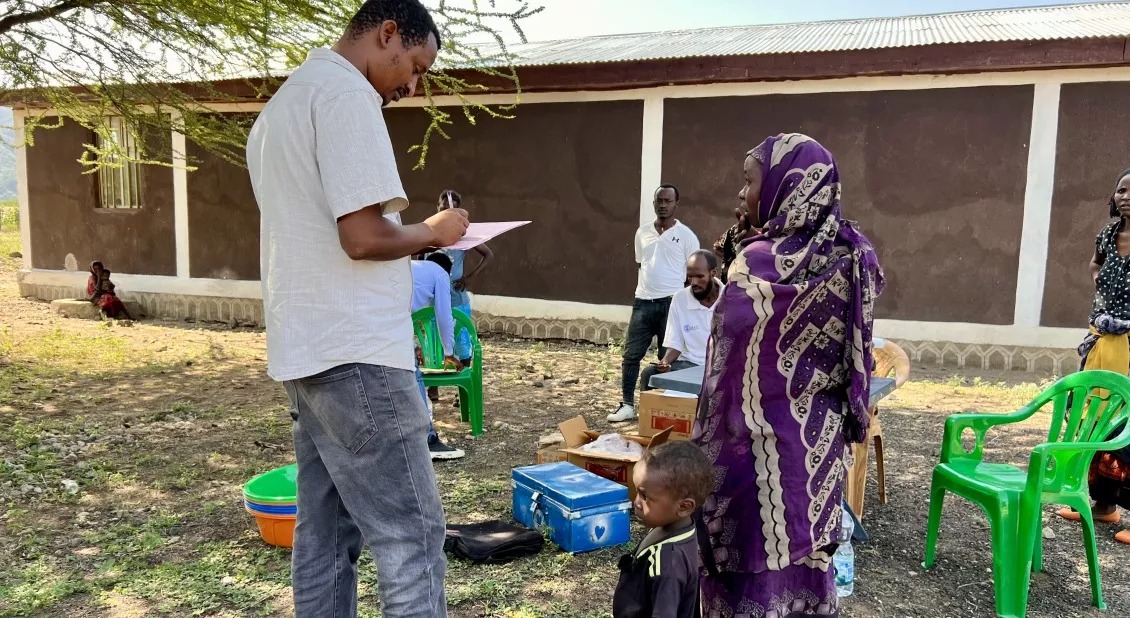
Waqoo’s pink card indicates that he is undergoing treatment for a more moderate version of acute malnutrition, while others who carry of yellow card are admitted for the most severe form. Once Waqoo’s record is located, it’s time for the researchers to assess his nutritional status and how well he is responding to the treatment he has been receiving. The staff and his mom move Waqoo through different measurement stations to capture all the necessary data.
First, a research officer measures his mid-upper arm circumference (MUAC) using a simple color-coded armband. A measurement in green (signifying 12.5cm and above) is indicative of a healthy arm circumference; whereas, yellow and red signify varying degrees of acute malnutrition, with anything below 11.5cm as the most severe form of acute malnutrition.
Today, Waqoo’s MUAC measurement is in the green zone at 13cm, up 1 cm since December, when he was first enrolled in the study. This is good news – it means he is recovering well from the treatment!
The research officers then check Waqoo for nutritional edema, also referred to as Kwashiorkor, a sign of severe acute malnutrition. Edema, or the accumulation of excess body fluid and swelling, that occurs due to malnutrition starts in both feet and extends upward into other parts of the body depending on the severity of the condition. By carefully pressing a thumb into the top of Waqoo’s foot, the officers will check for a lasting indentation, which, if found in both feet, is a tell-tale sign. If the swelling extends further up the body, it is more severe. Fortunately, Waqoo is in the clear.
At the next station, Waqoo has his weight taken on a standing scale.
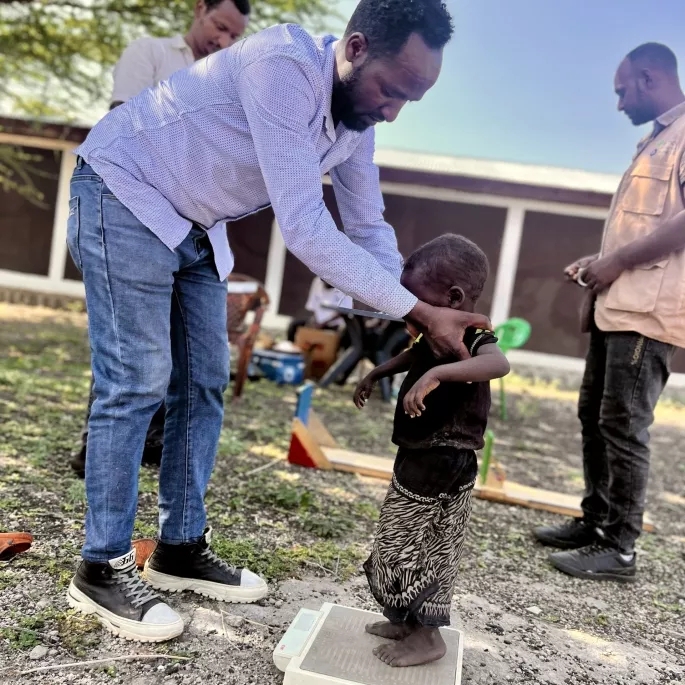
Ethiopia faces one of the world’s worst food crises. Nearly 29 million people are in need of humanitarian assistance. Many children like Waqoo face life-threatening malnutrition. Action Against Hunger is on the ground to provide urgent support and research new ways to save lives.
Then, he moves on to the height measurement station. In young children, height is measured laying down and it requires two people to do accurately: one to hold the child’s head in place and another to slide the moving footboard into place and record the corresponding measurement.
Once weight and height have been recorded, the officers can use a simple chart to evaluate the child’s weight-for-height z-score (WHZ). This allows us to compare Waqoo’s weight to that of a healthy boy of the same height.
With a healthy MUAC, a healthy WHZ score, and no edema, Waqoo has officially recovered from malnutrition.
This is his second visit with a positive outcome, so he will be discharged as cured this week. We always look for two consecutive positive outcomes before discharging a child to help indicate the stability of their recovery.
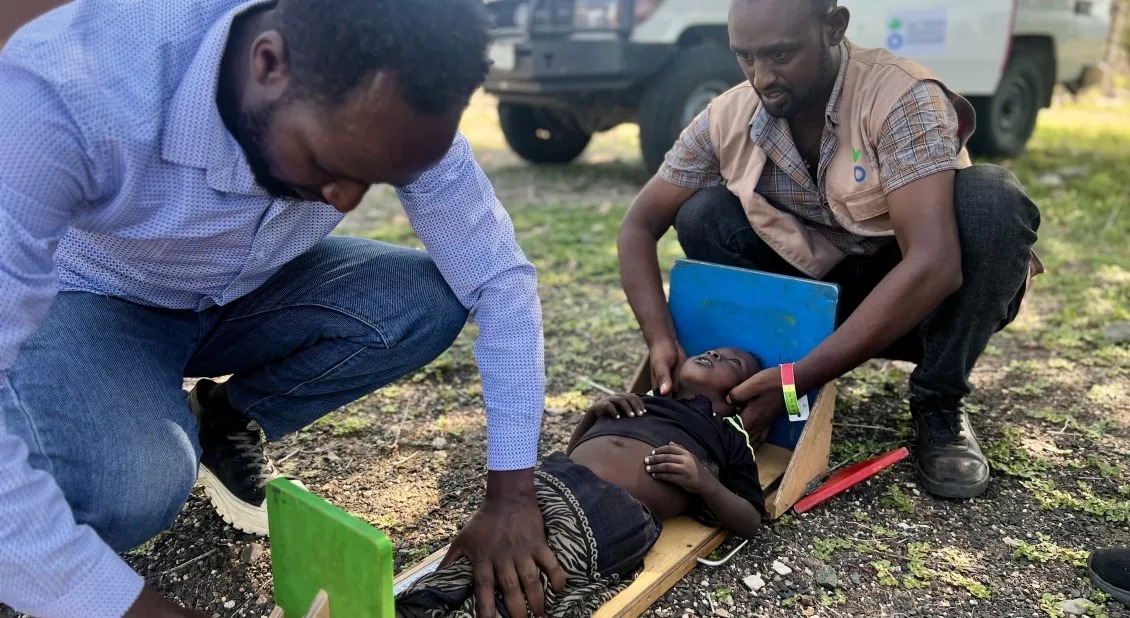
Like any child at a doctor’s visit, he is eager to get back to his mother after several measurements. Waqoo is also provided with one last week’s worth of food rations to take home as he is discharged. He grabs one of the pouches, squeezing out the sweet peanut butter-like paste and waits for his mother to finalize the discharge process.
Children, like Waqoo, that have successfully been cured of malnutrition are eligible to participate in the next phase of the MODAM study. This phase is designed to test ways to monitor, and possibly improve post-discharge outcomes for recovered children. Too often, children relapse after treatment, deteriorating back into malnutrition after recovery and returning to the environment that led them to be malnourished in the first place.
To identify these children early and prevent relapse, Action Against Hunger is testing a new innovative approach to monitor the child’s status after discharge and identify early on if the child starts to deteriorate. Through this approach, Action Against Hunger research officers train parents to screen their own children for malnutrition at home.
Even though Waqoo is not officially participating in the study, his mother Laquu still receives this brief training and a color-coded arm band to take home with her so she can continue to monitor his nutritional status over time. With Waqoo now healthy and able to play, he sets off hand-in-hand with his mother, as our research officers begin assessing the next child who is just arriving for their scheduled appointment.
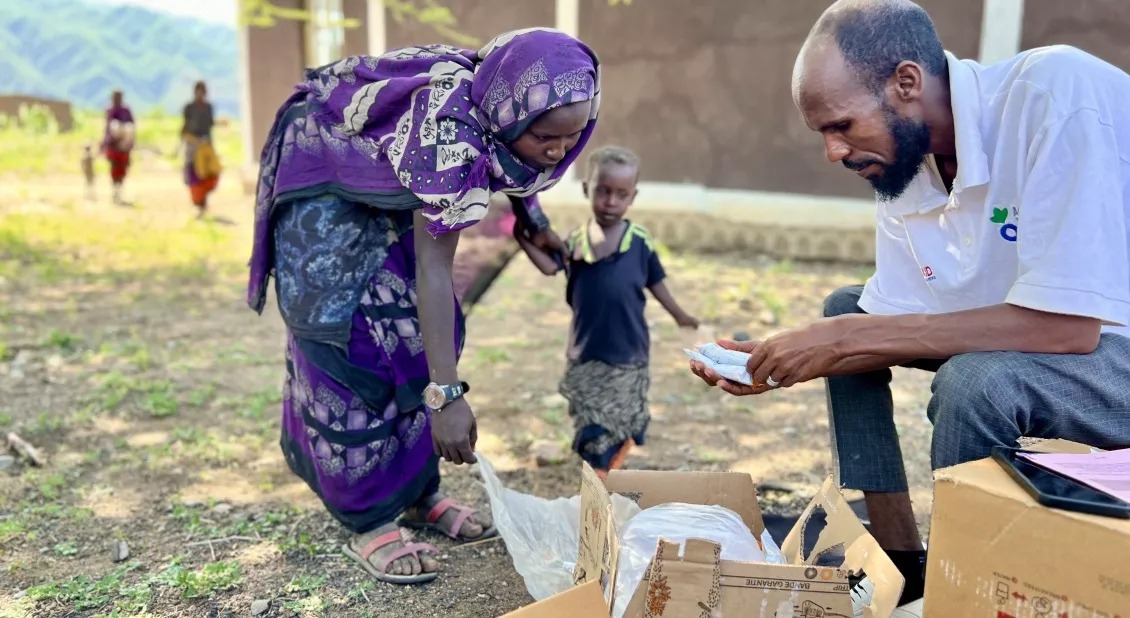
As part of the MODAM trial, Action Against Hunger research officers will treat several thousand children across Ethiopia. At the end of the study, researchers in both Ethiopia and the United States will compile all the data to determine the effectiveness of the modified dosages. Once findings are available, Action Against Hunger will have discussions with the Ethiopian Ministry of Health to determine what adaptations to national nutrition policies and standard treatment protocols might be possible in order to expand treatment coverage, reduce costs, and save more lives.
Join our community of supporters passionate about ending world hunger.